Ecological levels of organization
- Ecology is the scientific study of how life is spread out and how much of it there is, as well as how different living things interact with their natural surroundings.
- Ecology is a branch of biology. The word “ecology” comes from a Greek word that means “house” or “environment.”
- People can study ecosystems on a small or large scale. They may write complex academic projects in biology, do solo research or approach a qualified research paper writer at a legit online service for hire. Here are the levels of organisation, from the smallest to the largest:
Organism → Population → Community → Ecosystem → Biome → Biosphere
Ecological Level 1 – Organisms
- It is the simplest level of organisation, which includes both organisms with one cell and organisms with more than one cell.
- All the living things in this level have all the things that are needed for life to exist.
- Organism is an ecological term for a living thing that can act or work on its own.
- An organism can react to stimuli, reproduce, grow, change, and stay in balance.
- An organism is any living thing on Earth, like a plant, animal, fungus, protozoan, bacterium, or archaeon.
- There are many ways to group these living things. The most basic way to group organisms is by the number of cells they have, such as single-cell and multi-cell organisms.
- Dogs, cats, and cows are all examples of different species.
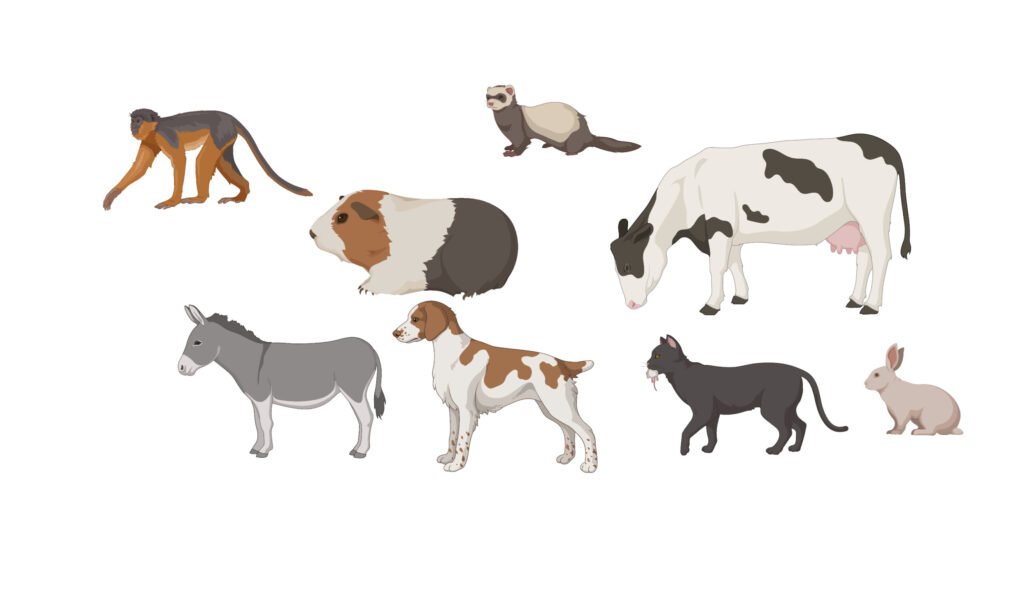
Ecological Level 2 – Population
- A population is a group of people from the same species who live together in the same area.
- They breed with each other and compete for food and space.
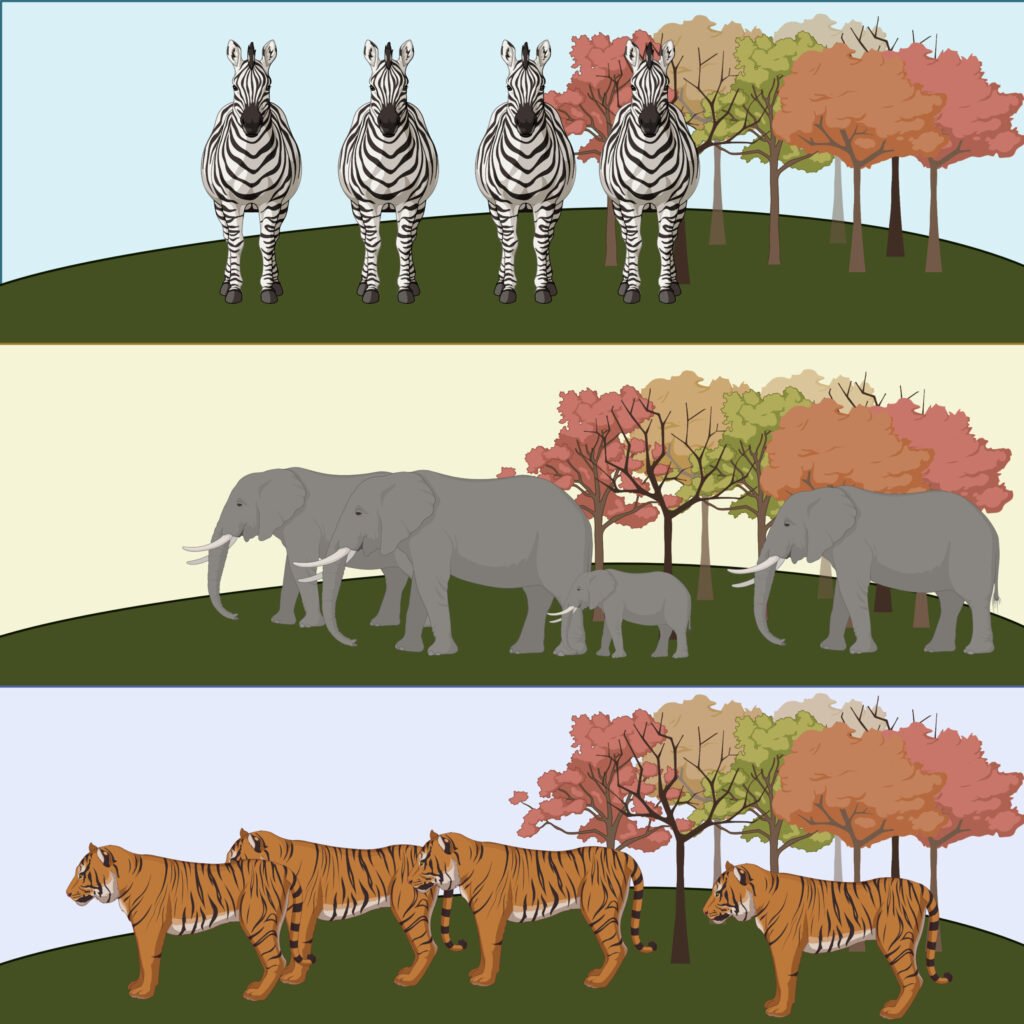
- On the other hand, a species is a group of people who have the same genes and can have children.
- People don’t belong to the same species if they can’t make children who can have children of their own.
- A group of dogs or cats, for example, is an example of Population.
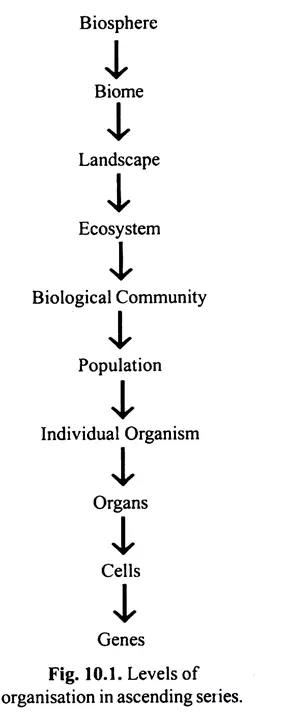
Ecological Level 3 – Biological Community
- It means the different groups of people who live in the same area and depend on each other.
- A community is made up of all the different species that live and interact in the same area.
- A community is made up of all the living things in an area.
- Communities include places like a grove of pine trees, a coral reef, a cave, a valley, a lake, or a stream.
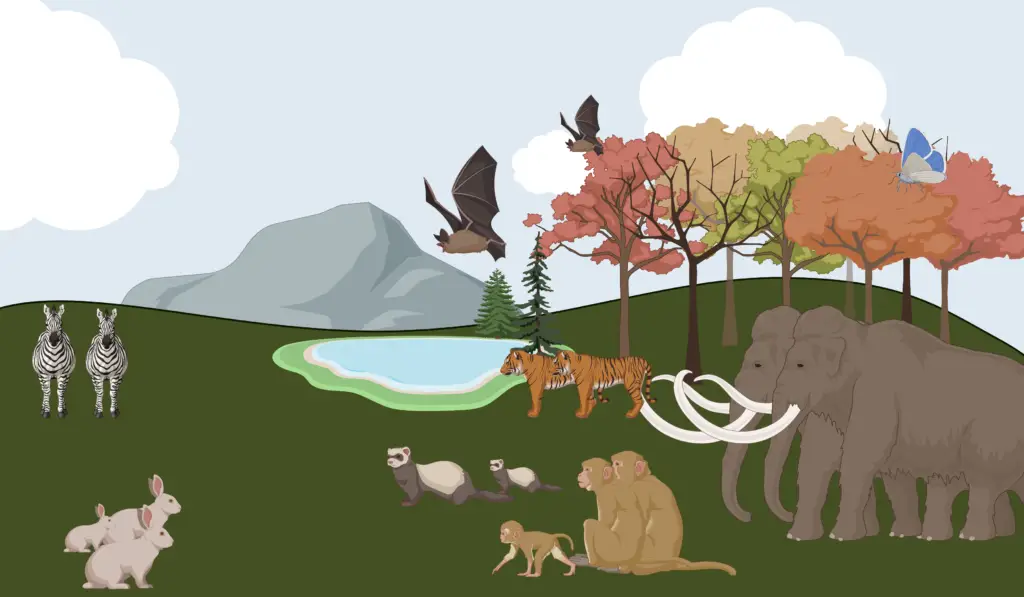
Types of Community
Depending on how big they are and how independent they are, communities can be put into two groups:
Major Community
- These organisations are very big, well-run, and able to take care of themselves. They get all of their energy from the sun and are not affected by what other communities put in or take out.
- For example, in the North-East, there is a tropical evergreen forest.
Minor Community
- These are often called societies because they depend on the communities around them.
- They are secondary groups within a larger community, so they don’t get all the energy and nutrients they need on their own.
- For example, a mat of lichen on a pad of cow dung.
Ecological Level 4 – Ecosystem
- An ecosystem is made up of all the living things (populations) in a certain area as well as the nonliving things in that area.
- Both living and nonliving parts of the environment have an effect on each other.
- Nutrient cycles and energy flows connect these living and nonliving parts.
- Photosynthesis provides the system with energy, which is absorbed by plant tissue.
- Ecosystems, like a pond or a forest, are parts of the landscape that can keep going on their own.
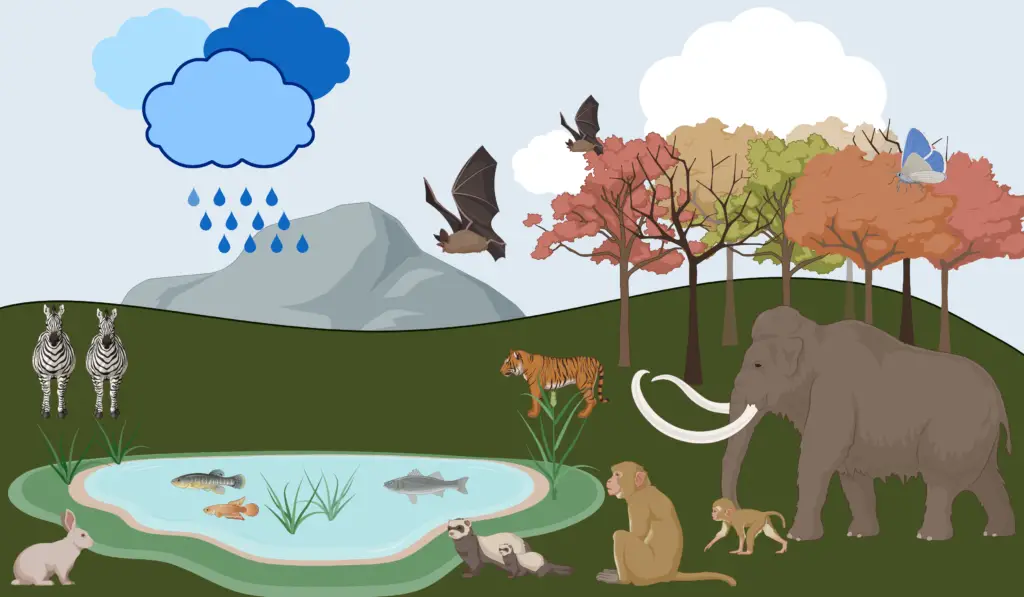
Components of Ecosystem
An ecosystem has two basic components
- Abiotic (non-living), and
- Biotic (living organisms).
Abiotic parts are made up of inorganic materials like carbon, nitrogen, oxygen, carbon dioxide, water, etc., while biotic parts are made up of living things like producers, consumers, and decomposers.
Ecological Level 5 – Landscape
- A landscape is a piece of land with a natural border and a patchwork of different kinds of plants and animals.
Ecological Level 6 – Biome
- The land part of the biosphere is split up into large sections called biomes.
- The weather, the plants and animals that live there, and the general type of soil make up a biome.
- No two biomes are exactly the same.
- The climate decides where the edges of each biome are and how many plants and animals live in each one.
- The most important parts of climate are temperature and rainfall.
- Biomes include the Savannah, Tundra, Boreal Forests, Grasslands, Deserts, Tropical Rain Forests, Tropical Deciduous Forests, and Temperate Forests.
- This is a large area defined by a major type of vegetation and the animals that live with it in a certain climate zone.
- The biome is made up of all the communities that grow and change together in the same climate zone, such as forest biomes, grassland and savanna biomes, desert biomes, etc.
- On a global scale, the biosphere is made up of all the land biomes and water systems on Earth.
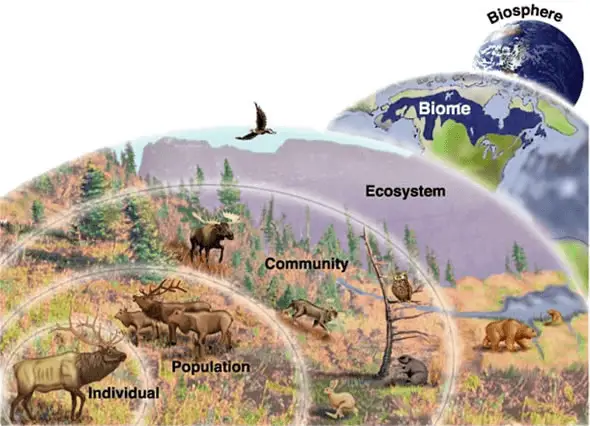
Ecological Level 7 – Biosphere
- The biosphere is all of the living things on Earth and their environment, including the atmosphere.
- The biosphere is the part of the Earth where there are living things.
- The biosphere includes most of the Earth’s surface, as well as a part of the atmosphere and oceans.
- In other words, the biosphere includes all living things and their environments as a whole.
- So, the biosphere is made up of the atmosphere, the lithosphere, and the hydrosphere.
References
- https://www.ck12.org/biology/ecological-organization/lesson/Levels-of-Ecological-Organization-MS-LS/
- https://prepp.in/news/e-492-levels-of-organisations-in-ecology-environment-notes
- https://flexbooks.ck12.org/cbook/ck-12-middle-school-life-science-2.0/section/12.2/primary/lesson/levels-of-ecological-organization-ms-ls/
- https://byjus.com/biology/five-levels-of-ecology/
- https://www.biologydiscussion.com/ecology/ecological-levels-of-organisation-environment/51830
- https://www.canr.msu.edu/resources/ecosystem-organization
- https://www.khanacademy.org/science/biology/ecology/intro-to-ecology/a/ecological-levels-from-individuals-to-ecosystems
- https://www.jotscroll.com/forums/3/posts/142/ecology-definition-levels-of-organisation-ecological-problems.html
- https://courses.lumenlearning.com/wm-biology2/chapter/levels-of-ecological-research/
- Text Highlighting: Select any text in the post content to highlight it
- Text Annotation: Select text and add comments with annotations
- Comment Management: Edit or delete your own comments
- Highlight Management: Remove your own highlights
How to use: Simply select any text in the post content above, and you'll see annotation options. Login here or create an account to get started.